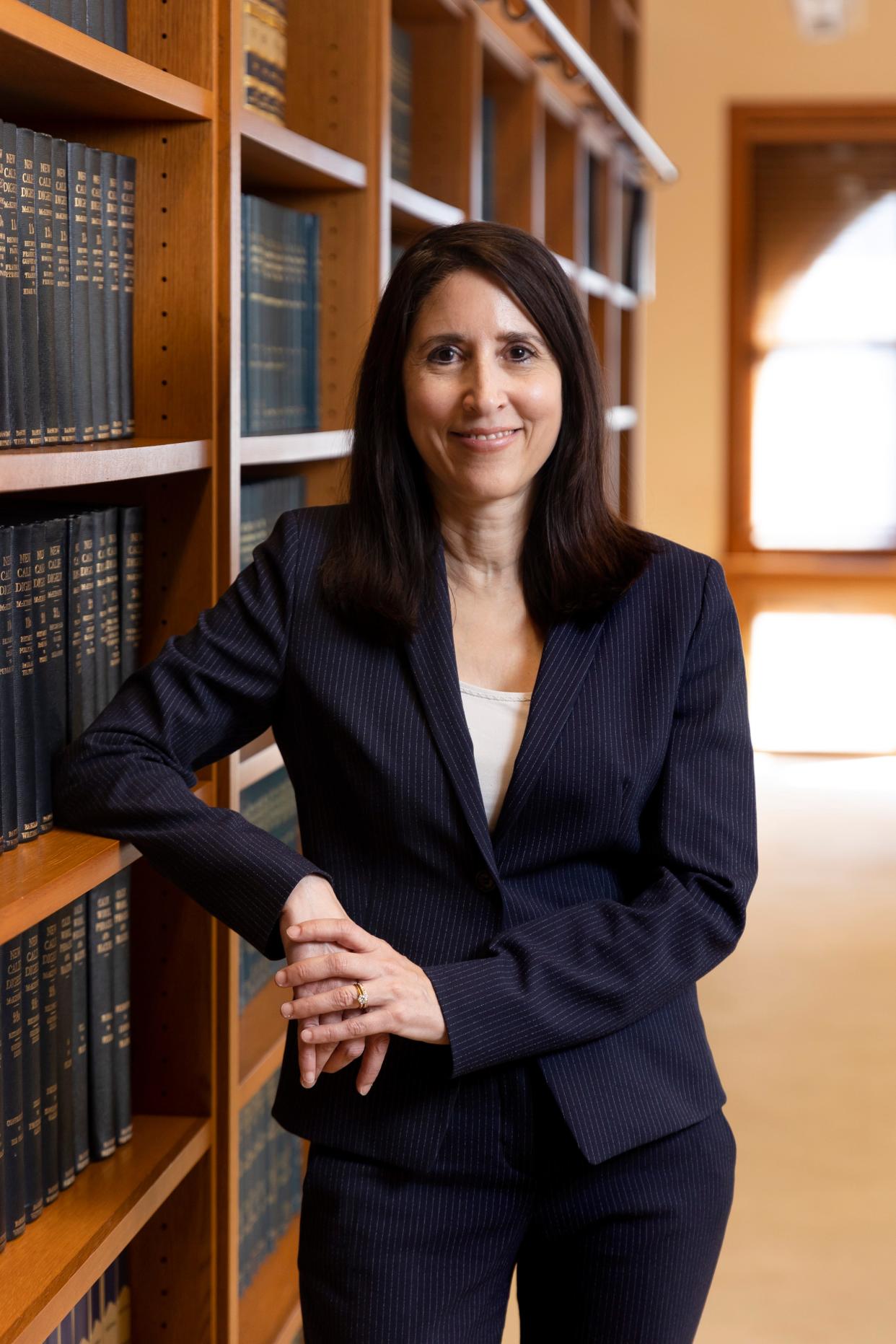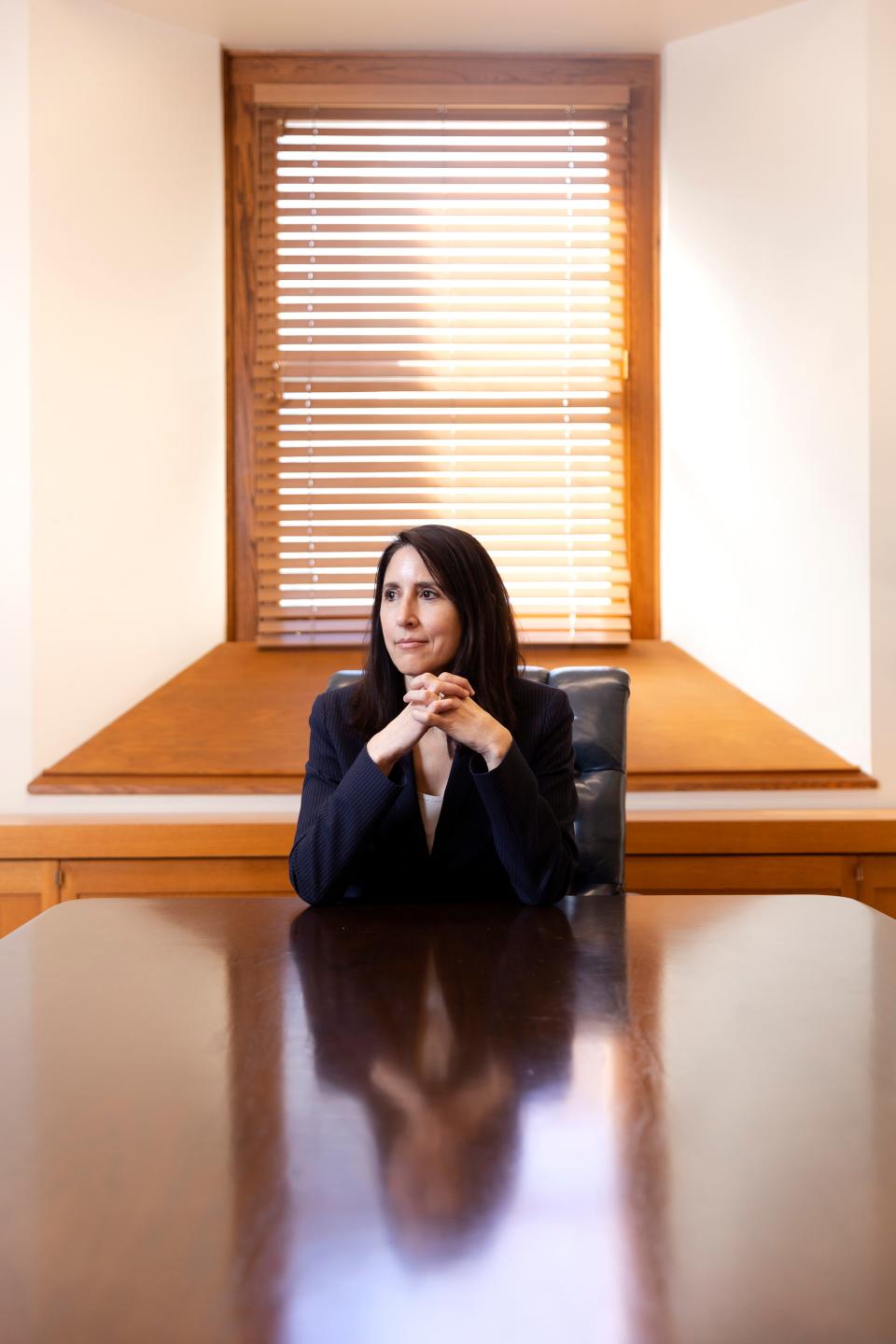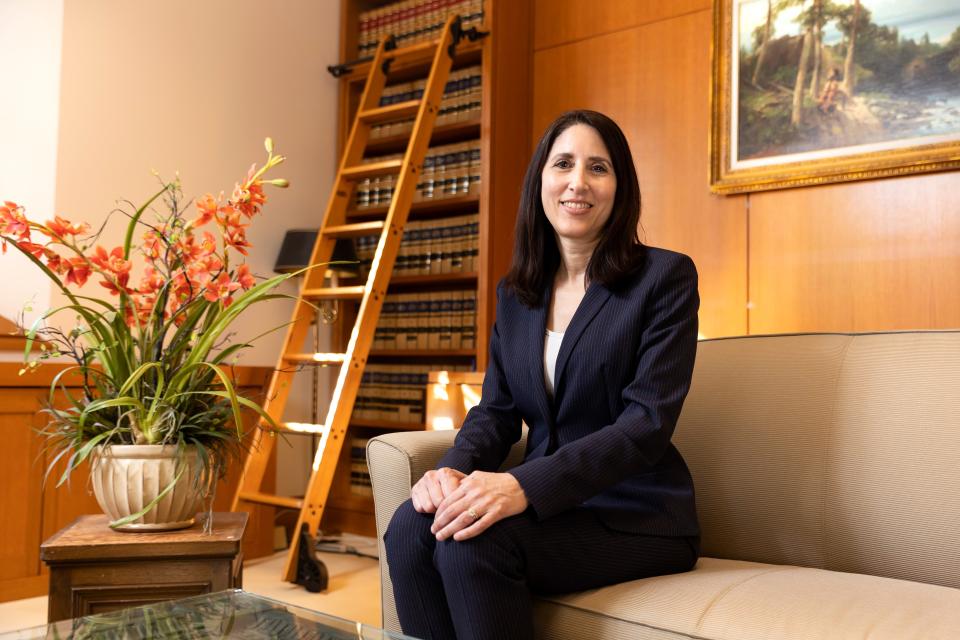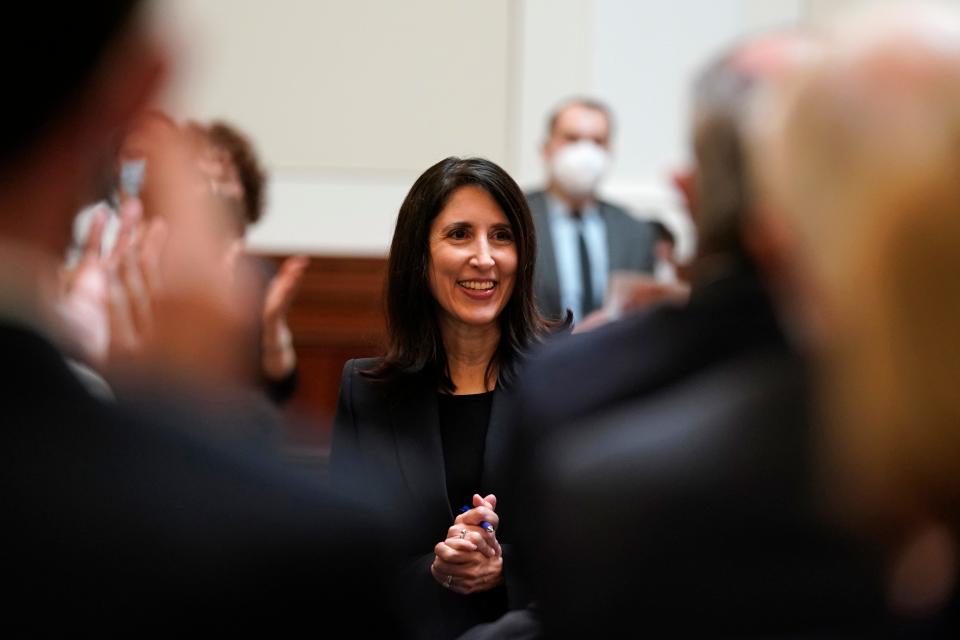Patricia Guerrero brings parents’ lessons of ‘sharing your voice’ to California Supreme Court

Patricia Guerrero is one of USA TODAY’s Women of the Year, a recognition of women who have made a significant impact in their communities and across the country. The program launched in 2022 as a continuation of Women of the Century, which commemorated the 100th anniversary of women gaining the right to vote. Meet this year’s honorees at womenoftheyear.usatoday.com.
When Patricia Guerrero was sworn in on Jan. 2, 2023, she became California’s first Latina chief justice on the Supreme Court.
That’s after an illustrious career marked by firsts: First generation to be born in the United States, valedictorian of her high school class, first generation in her family to go to college, first choice for numerous scholarships while attending University of California, Berkeley, and ― in 2022 ― first Latina to serve on the California Supreme Court as an associate justice.
In 1997, with a juris doctoral degree in hand from Stanford Law School, Guerrero worked tirelessly to encourage more women to join the legal profession. She also passionately supported immigrants including asylum applicants with pro bono work and served on the Immigration Justice Project Advisory Board.
Guerrero is quick to credit her family and teachers for her successes. “Both of my parents have shaped who I am and how I approach my life, with the recognition that I am blessed to have the opportunity to work hard doing something I love.”

Getting to where she is now took three generations of hard work.
Guerrero, 51, was born in California's Imperial Valley, seven miles north of the Mexican border. The town had 74,492 people, less than half its current population.
Both her parents grew up in poverty in Mexico. Her father left school during the fifth grade to go to work and help feed his family. Her mother completed middle school, but didn’t go on to high school.
But education was a priority when she was growing up, Guerrero said. Her parents “taught us the importance of an education, working hard and helping others. They taught us to believe in ourselves, to follow our dreams, to be confident and independent, and to be compassionate toward others.”
"The personal sacrifices both of my parents made to come to the United States have benefited my family in countless ways and have shaped my work ethic and aspirations from an early age," Guerrero said. "I always admired my father’s and grandfather’s work ethic, and it's something that I have tried to emulate.”
Being one of the first-generation Latinas in college and in the legal profession meant Guerrero often had to carve her own way.
“I sometimes felt I did not quite fit in,” she said. “It was difficult to find anyone with a similar background to help me navigate through the process of becoming an attorney and judge. It can be tempting to go back to a more familiar environment or opt out in other ways.”
Again, her family bolstered her through the rough times, she said. “My parents taught us that there is value in just being yourself, and that sharing your voice based on your unique experiences is important.”
Intersectional identities meant breaking through a holistically thick glass ceiling. While Guerrero said there’s room for improvement, she’s “thankful” the prevalence of gender-based harassment is waning and more women justices and judges of color are sitting on the bench.

She hopes her story will help others "experiencing similar challenges," Guerrero said, and to "help build a pipeline of future leaders in the legal profession.”
Building opportunities means advocating for those who haven’t yet the power to act on their own, including immigrants.
“I’m grateful for the opportunities I have been given as a result of my parents coming to this country," she said. "I want to help others ― so I can honor my parents’ sacrifices."
That gratitude and pride run in the family.
“After my mother passed away, I was organizing her belongings. She kept very few things: Mostly photos of my sister and me as children and her family in Mexico. There was one item personal to her that obviously had special meaning: Her test to become a United States citizen showing that she received 100% in response to 100 questions. She wrote that she was looking forward to the opportunity to vote. The story of my parents and others like them is a true reflection of the American dream. It’s an honor for me to now be able to serve the public as part of that American dream, too.”
This conversation has been edited for length and clarity.
Who encouraged and supported you on your path? Who paved the way for you?
In middle school and high school, I was fortunate to have encouraging teachers who suggested that a career as an attorney would be a good fit for me. That message was reinforced when one of my college professors encouraged me to apply to law school. After law school, I had wonderful mentors in private practice who supported my professional development. When I was appointed to the bench, I was fortunate to continue receiving support from amazing colleagues like Judge Maureen Hallahan and Justice Judy McConnell.
And, of course, trailblazers like Justice Cruz Reynoso, the first Latino on the California Supreme Court; Chief Justice Rose Bird, the first female on the California Supreme Court; and Chief Justice Tani Cantil-Sakauye, the first person of color to serve in this role, have helped pave the way for me and countless others.
I have deep admiration, respect, and gratitude for all of them, and they each served as role models in various ways. Based on my own experiences, I recognize the importance of lifting others up. Even small words of encouragement, and making yourself available, can go a long way in positively influencing someone else’s life.

What advice would you give your younger self?
I would tell my younger self that life is a marathon, not a sprint, and to pace myself during challenging times. Others have told me similar things throughout my career. When I was a young associate, I was even told in Italian, “Chi va piano va lontano.” (Those who go slowly go far.) I confess I have not always heeded this advice, but now may be a good time to start!
What is your proudest moment? Did you have a lowest moment?
I don't think of my professional life when I think of my proudest moment, becoming a mother; or my lowest moment, losing my mother. I would say, however, that I have been blessed with the love and support of my family and friends to help get me through all of these times ― good and bad ― in both my personal and professional life.
What is your definition of courage?
When I think of courage, I think of my parents. They had the strength and conviction to come to a new country and create a new life that would be difficult for them, but better for their children.
In my own life, I define courage as doing the right thing regardless of what others might think; being willing to take risks; and persevering in the face of any failures or setbacks.
Is there a guiding principle or mantra you tell yourself?
My guiding principle is to try to live a life that would make my parents proud, and to serve as a good role model for my own children.
How do you overcome adversity?
I try to view adversity as an opportunity to learn and grow. I work through problems by trying to tackle them in manageable pieces, by “being realistic, but optimistic,” as my youngest son says.
In times of adversity, I look to those who have grounded and inspired me throughout my life. I try to remember who and what is important to ground me. And I try to pick myself up and keep fighting, channeling my inner “warrior” which is, after all, the meaning of my last name.
2022 Women of the Year: Stanford’s Tara VanDerveer says she has an ‘obligation’ to mentor, give opportunities to women
Women of the Century: Nancy Pelosi, Ellen DeGeneres, Serena Williams among California’s most influential women on centennial list
This article originally appeared on Redding Record Searchlight: California's first Latina chief justice recognized by USA TODAY

